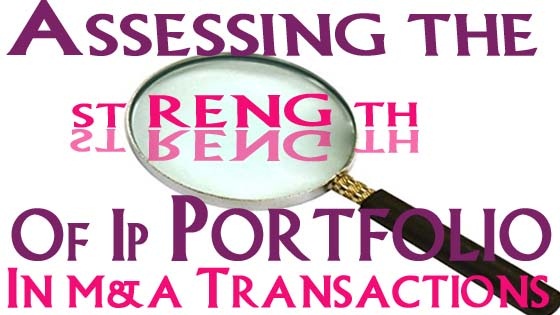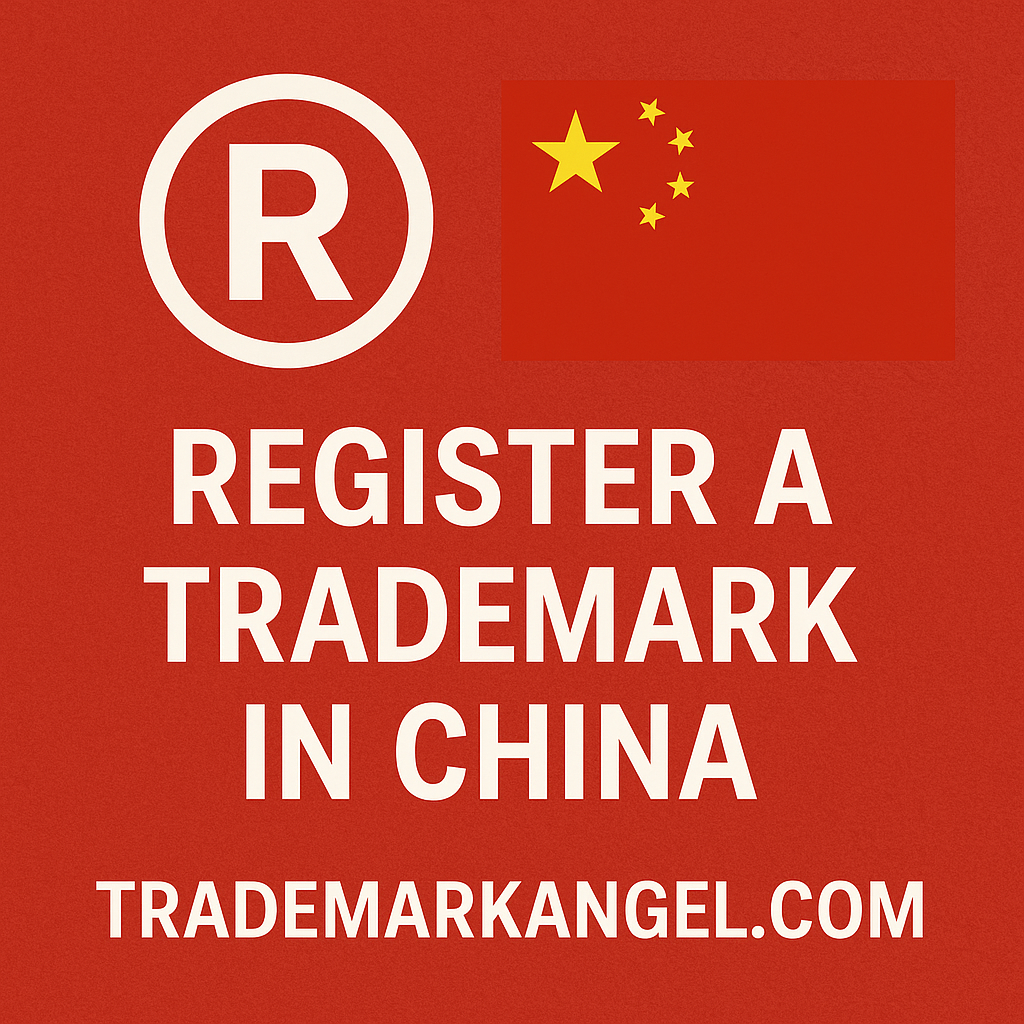
IP Portfolio in M&A Transactions
Assessing the Strength of a Trademark Portfolio –
A Helpful Guide
Anita Mar, CEO, Trademark Agent at Trademark Angel
Acquiring a trademark portfolio when a business is sold or when two businesses merge is often considered in only one regard – that of trademark protection. This means that the assets of this portfolio often go unexamined, or are merely lightly examined, during a typical analysis of due diligence.
It’s vital that a trademark portfolio receive a thorough analysis to best calculate its overall strength, which is often a difficult measurement to take in regards to a company’s intellectual property (IP).
Below you’ll find a helpful checklist that can be of assistance when assessing the strength of a trademark portfolio. But first, it’s important to note the five main areas that are considered in a due diligence analysis: the ownership and status of the trademark; the use of the trademark; the jurisdiction (or lack thereof) of said trademarks; any relevant licensing of the trademarks; and any infringement or trademark disputes that have involved some or all aspects of the trademark portfolio.
With these areas in mind, the following checklist should prove vital in assessing the strength of a trademark portfolio:
1. Ownership and status of trademarks
- What specific trademarks does the seller own? Are the trademark deadlines fully accounted for?
It’s a good idea here to get the serial numbers of all relevant trademarks and prepare a detailed status list.
Other questions to consider include:
- Are the trademarks owned by the seller? Is the seller shown as the current owner of the trademark office database? Are there any inconsistencies in terms of ownership?
This is when an independent trademark search should be performed, to allow the determination of documented ownership.
- What does the seller do to protect its trademark rights? Does the seller have a trademark monitoring service in place?
Subscribing to a trademark watch service is always a cost-effective way to maintain the strength of one’s trademark portfolio.
2. Use of the trademarks
- Are the trademarks in question actually being used by the seller?
It’s typically common knowledge that trademarks refer to specific products and services within a business; what’s less commonly known is that a business has to use these trademarks in a consistent manner to maintain their trademark rights. In fact, If a seller is not using their respective trademarks, it’s always good practice to ask why this may be the case.
Conversely, if there are trademarks in use that are not listed in the trademark portfolio, the potential seller may be asked to file those trademarks prior to the completion of the sale.
3. Jurisdictions and gaps in trademark protection
As a buyer, you should always examine the entirety of the portfolio to ensure global trademark protection, where applicable.
- Does the seller’s area(s) of operation match the jurisdictions where the trademarks are filed?
If you notice any discrepancies, it’s a good idea to ask the seller to consider these “gaps”.
4. Licenses
- Has the seller given any licenses to third parties?
License agreements should always be reviewed to determine the potential maintenance and/or transfer of the licenses in question. You also may want to consider performing an analysis to determine if these licenses are at risk of being invalid for the failure of consistent quality monitoring.
If any of the third-party trademarks are used under license, a license agreement should be drafted and recorded at the respective trademark office before the time of sale, to avoid any future problems or inconsistencies with these licenses.
It’s also a good idea to ask for a complete list of licenses that have been granted under the trademark portfolio.
5. Infringement risk and trademark disputes
- Does any aspect of the trademark portfolio infringe on other registered trademarks?
This is one of the most important considerations to keep in mind when considering the acquisition of a portfolio. It’s also beneficial to check that a third party is not infringing upon any rights of the trademark portfolio itself.
- Is the seller involved in any trademark disputes or cancellation actions? Are there any unresolved opposition proceedings? How might this affect the strength of the trademark portfolio?
Also consider whether the seller has a trademark “watch service” in place, and check to make sure there are no outstanding conflicts of interest before the sale is completed.
In Conclusion: The Value of the Trademark Portfolio
Measuring “brand value” is an important step in today’s marketplace, as well-known brands are increasingly considered to be of tangible value to a company’s overall worth.
In business, this value is often called “goodwill”, which effectively measures the loyalty of a company’s consumer base (and therefore, of its brand). While it’s often difficult to measure the quantitative value of a trademark or trademark portfolio, it’s important to note that businesses are often worth more precisely because of their brand(s)’ position in within the marketplace.
This is why proper attention should always be paid when it comes to the valuation of a trademark portfolio. Furthermore, it’s helpful to consider who will be responsible for the maintenance and continuation of the trademark portfolio when the sale has been completed.
All this to say:
Trademark due diligence is critical to the successful acquisition of a trademark portfolio. This process points out any areas in need of attention before the sale of a trademark portfolio is closed, and ensures that you are receiving the proper value of the trademark portfolio in question.
Trademark Angel’s team of experts are happy to assist with the topic of trademark portfolios, and their assessments, to make sure you’re getting the most for your business. Please feel free to contact our representatives at any time for a no-obligation consideration of your portfolio options!
[/fusion_text][/fusion_builder_column][fusion_builder_column type=”1_2″ layout=”1_2″ spacing=”” center_content=”no” hover_type=”none” link=”” min_height=”” hide_on_mobile=”small-visibility,medium-visibility,large-visibility” class=”” id=”” background_color=”” background_image=”” background_position=”left top” background_repeat=”no-repeat” border_size=”0″ border_color=”” border_style=”solid” border_position=”all” padding=”” dimension_margin=”” animation_type=”” animation_direction=”left” animation_speed=”0.3″ animation_offset=”” last=”no”][fusion_text]
Determining Patent Quality – What Every Buyer Must Know Before Concluding Any M&A Transaction
Philip A. Swain, PhD, IPSIS, Inc., Montreal, Canada
In commercial transactions, such as Merger & Acquisitions, intellectual property (IP) is often a key component. Before concluding the transaction, buyers and investors would do well to check the health of the IP by considering the following questions.
A company’s IP particularly its patent portfolio is a key value indicator. In any commercial transaction, such as an M&A transaction, it is important to identify and accurately assess patent quality and value by answering the following questions:
- Do existing patents and patent applications cover and protect the company’s products, services, and research areas?
- Are the company patents enforceable against a competitor?
- Are the patents a potential source of licensing revenue?
- Are divisional, continuation-in-part, continuation applications, reissue applications, re-examination or any additional patent applications warranted?
- What is the patent portfolio worth in the context of the value of the company as a whole?
A number of scenarios exist in which a business may wish to assess the quality of a patent owned by another company. The risk of infringing a third-party patent depends upon that patent’s applicability, the strength and breadth of its coverage and whether its validity can be challenged. It is important to evaluate the quality of another company’s patents to answer the following:
- Is the technology in a crowded field?
- Will a competitor’s patents affect the company’s decision to launch a product or carry our R&D?
- Are in-licensing opportunities available for a patent?
- Should the company acquire or merge with a competitor?
- Should the company ensure its own portfolio is defensible or for negotiating strength given a competitor’s patents?
A due diligence analyzes information about a target company’s intellectual property portfolio and assesses the risks, exposure and benefits associated with the proposed transaction.
The outcome will determine whether the benefits and risks of the transaction fit into the buyer’s strategic short and long-term business goals. To accurately assess patent quality, five key areas should be considered:
Subject matter
It is important to consider the subject matter addressed by the patent and whether it is related to one’s own market or technological area. The patent may have some general intrinsic value, and certain companies are interested in acquiring patents regardless of the technological area. However, unless it is directly relevant to the company’s business, it is likely a waste of time to assess it.
Claims – scope of exclusivity
Claims are the most important feature of a patent. Claims define the limits of the property right conferred by a patent. Therefore, once a company determines that the patent’s subject matter warrants further analysis, the next step is to study the claims.
A good set of claims defines the invention with varying scope. Each claim should provide a different breadth of coverage. Broad claims cover the overall inventive concept. Other claims, such as dependent claims, introduce limitations relating to particular examples of the invention. While such claims provide narrower coverage, the patent holder may be more successful defending narrower claims against invalidity attacks based on prior art. An alleged infringer usually challenges patent validity whenever a patent holder asserts the patent against it. Thus, it is important for a patent holder to have a patent attorney/agent create a claim tree, which shows claims of differing scope and breadth as fallback positions.
Another issue is whether the claims include all of the invention’s parallel and alternative forms. Typically, patents should include a combination of method claims (a sequence of steps, such as a processor business method), system claims (an apparatus, functional architecture or machine) and computer program product claims (software encoded on a medium, such as a disk). In pharma patents, the composition of matter claims (generic formula, sub-genus and specific compound), process claims, and method of use (methods of treating a disease) claims are a bare minimum.
The company also should examine whether the claims specify steps to be performed by more than one party, entity, person or machine. For patents involving multiple entities (such as client/server architectures), it is important to include separate claims for the steps performed by each entity. For example, one set of claims may cover steps performed by the client, and another set may cover steps performed by the server. A competitor then could be liable for infringement by operating or selling just the server or just the client.
In general, any invention involving communication or interaction between nodes, entities, components or users should include separate claims for as many of these entities as is practicable. This avoids any requirement that the infringer sells or operate all entities.
One also should note whether the claims include “means plus function” language. Such claims define an element of a system according to the function it performs, rather than merely its structure. However, the scope of such claims is narrower than it would appear, due to statutory language specifically limiting such claims to the description in the specification, plus equivalents. Although there is nothing wrong with including “means plus function” claims, it is important to also include other claim formats.
Specification
A patent’s specification can have a significant effect on its scope and validity. Courts will read the claims in light of the specification and use the specification for guidance about the terminology used in the claims and what the applicant intended the claims to protect. If the specification contains limiting language, a court may read those limitations into the claims, even though the claims do not recite those limitations. One should be wary of so-called “patent profanity” – words like “essential”, “critical”, “must have” are examples of limiting language.
One should review the specification for completeness. A patent must describe the “best mode” of practicing the invention known to the applicant at the time of filing. It must describe the invention at a level of detail sufficient to allow an individual having ordinary skill in the art to recreate the invention. If doubt exists as to whether the description is sufficient, then the patent’s value is questionable; a defective specification can lead to the invalidation of the claims.
Prosecution history
The prosecution history of an issued patent provides information as to the claims that the patent holder originally filed, the number of office actions, responses and interviews that took place and the rejections, arguments, and amendments that were made.
In the US, this information can have a dramatic impact on the value of a patent and can reveal vulnerabilities that are not immediately visible. Amendments made during patent prosecution can disqualify a claim (or a claim element) from having its scope expanded under the so-called “doctrine of equivalents”, which otherwise can extend a claim’s coverage beyond its literal language.
An infringement defendant can use the prosecution record as a basis for construing the claims narrowly, arguing that such statements in the record indicate what the applicant intended to patent (and the examiner intended to allow) and that the court should read the claims in light of such statements. In general, excessive arguments, characterizations, and assertions during prosecution may increase the risk that a patent’s scope may be deemed questionable if challenged.
Priority date and Prior Art
In the “first-to-file” era, patents with earlier priority dates are more valuable than later-filed patents because the earlier filing date means that less prior art is available to defeat the patent.
In considering the priority date, one should investigate what prior art existed at the time, as well as what products may have been launched before the application was filed. In the United States and Canada, an inventor must file a patent application within one year of any public disclosure of the invention. Therefore, it is important to consider what disclosures may have been made more than one year before the application’s filing date (or priority date).
If relevant prior art does exist, one should investigate whether the applicant properly cited the art to the examiner in the course of the patent’s prosecution. Art that was considered by the examiner may make the patent stronger because there is a presumption that the patent is valid over art that was considered, although the presumption is rebuttable. However, in the United States, if the applicant knew of relevant art but failed to cite it, then the patent may be invalidated due to the applicant’s failure to fulfill the duty of candor, which requires an applicant to disclose any relevant part of which he or she is aware in the course of prosecution.
Patents that claim priority from other patents or applications are subject to additional avenues of attack. If a patent claims priority from an earlier provisional application, and the provisional application fails to fully support the claims, then the priority claim can be defeated. Similarly, a patent that claims priority as a continuation or continuation-in-part can lose the benefit of the earlier priority date if the specification of the parent application does not adequately support its claims. Therefore, for any patent that claims priority from another patent or application, one should review the specification of any patent application.
Conclusion
Assessing a patent’s value is a multifaceted exercise that often requires the skill and expertise of an experienced patent practitioner. However, the points discussed above are crucial in such analysis and a good starting point in an attempt to ascertain the overall value of a patent
www.ipsisip.com
[/fusion_text][/fusion_builder_column][/fusion_builder_row][/fusion_builder_container]





